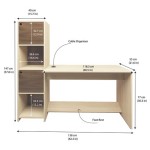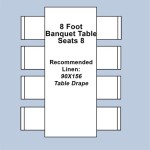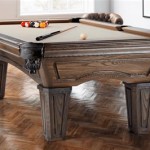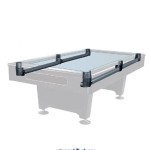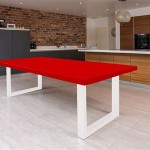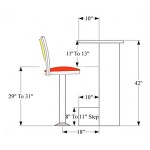Sewing Cutting Table Dimensions: A Comprehensive Guide and Chart
Choosing the right sewing cutting table is crucial for any sewing enthusiast, from beginners to seasoned professionals. The dimensions of the table directly impact the efficiency and comfort of the sewing process. A table that is too small crimps space and hinders the ability to lay out fabric properly, while a table that is too large can dominate a room and make reaching all areas difficult. This article provides a comprehensive guide to understanding and selecting appropriate sewing cutting table dimensions, incorporating a practical chart for quick reference.
Understanding the various factors influencing the ideal cutting table size is paramount. These factors include available space, the types of projects typically undertaken, the user's height, and any physical limitations that might affect reach and posture. By carefully considering these aspects, individuals can make informed decisions that lead to a more enjoyable and productive sewing experience.
Factors Influencing Cutting Table Dimensions
Several interconnected factors play a significant role in determining the optimal dimensions for a sewing cutting table. Ignoring these factors can lead to discomfort, inefficiency, and ultimately, dissatisfaction with the chosen table.
Available Space: This is perhaps the most obvious, yet crucial, factor. The dimensions of the room or dedicated sewing area dictate the maximum size of table that can be accommodated. It is essential to consider not only the footprint of the table itself but also allowance for comfortable movement around it. One should measure the available area accurately and account for other furniture and storage solutions within the space.
Project Types: The size and complexity of sewing projects directly influence the required table surface area. For smaller projects, such as quilting squares or garment alterations, a smaller table may suffice. However, for larger projects like dressmaking, pattern drafting, or working with wide fabrics like upholstery material, a larger cutting table is essential to avoid fabric overhang and ensure accurate cutting. If one anticipates working on a variety of project sizes, selecting a table with a larger surface area or considering a modular table that can be expanded is a wise investment.
User Height: The height of the cutting table should be ergonomically suited to the user's height. A table that is too low can cause back strain from excessive bending, while a table that is too high can lead to shoulder and neck pain. The ideal height allows the user to stand comfortably with their arms bent at a 90-degree angle, allowing them to cut fabric without hunching or reaching. Adjustability is a valuable feature to consider, especially if the table will be used by multiple people.
Physical Limitations: Individuals with mobility limitations, such as those using wheelchairs or with limited reach, may require specifically designed cutting tables. These tables often feature adjustable height settings, clear under-table space for wheelchair access, and potentially even tilting surfaces to improve accessibility. Careful consideration should be given to these specific needs to ensure a safe and comfortable sewing environment.
Storage Needs: Many cutting tables incorporate built-in storage solutions, such as drawers, shelves, or cubbies. These features can be invaluable for organizing sewing supplies, patterns, and tools. When evaluating table dimensions, consider whether integrated storage is desired and how much space it will occupy. If ample storage is already available elsewhere in the sewing area, this may be less of a concern, freeing up more room for the table surface itself.
Understanding Standard Cutting Table Dimensions
While custom-built cutting tables offer the most flexibility in terms of dimension tailoring, commercially available tables typically adhere to standard sizes. Understanding these common dimensions can aid in the selection process and allow for easier comparison between different models.
Height: Standard cutting table heights typically range from 36 to 42 inches (91-107 cm). This height range is designed to accommodate most adult users comfortably while standing. However, as mentioned earlier, adjustable height tables offer the most versatility. A table with an adjustable height range allows the user to fine-tune the height to their precise needs, promoting better posture and reducing strain. Consider that some adjustable tables require manual adjustment, while others offer electric height adjustment, providing added convenience.
Width: The width of a cutting table typically falls between 36 and 48 inches (91-122 cm). This dimension determines how much fabric can be laid out side-by-side. A wider table is particularly beneficial for working with large pattern pieces or wide fabrics. If space is limited, a folding cutting table that can be expanded when needed might be an appropriate choice.
Length: The length of a cutting table can vary significantly, ranging from 60 inches (152 cm) to 72 inches (183 cm) or even longer. The length dictates the amount of fabric that can be laid out end-to-end. For dressmaking and pattern drafting, a longer table is generally preferred. If one primarily works on smaller projects, a shorter table might be adequate. Again, modular tables offer the advantage of customizable length, allowing the user to add or remove sections as needed.
Depth: The depth of a cutting table should allow the user enough comfortable space to reach over the fabric and make accurate cuts. A depth of 24 inches to 36 inches (61-91 cm) is usually sufficient. A wider or more shallow table is also a good choice, depending on the space available.
Cutting Table Dimensions Chart
The following chart provides a general guideline for sewing cutting table dimensions based on project type and available space. It is important to note that these are merely suggestions, and individual needs may vary. Measuring the available space and considering the user's height and physical limitations is crucial for making the most appropriate selection.
Small Projects (Quilting Squares, Alterations):
Height: 36-42 inches (91-107 cm)
Width: 36-48 inches (91-122 cm)
Length: 48-60 inches (122-152 cm)
Medium Projects (Garment Making, Home Decor):
Height: 36-42 inches (91-107 cm)
Width: 42-48 inches (107-122 cm)
Length: 60-72 inches (152-183 cm)
Large Projects (Pattern Drafting, Upholstery):
Height: 36-42 inches (91-107 cm)
Width: 48+ inches (122+ cm)
Length: 72+ inches (183+ cm)
Adjustable Height Tables:
Height Range: Variable, typically 28-48 inches (71-122 cm)
Width: Variable, depending on the model
Length: Variable, depending on the model
These dimensions are indicative and are meant as general recommendations. The actual dimensions chosen should be determined by the specific demands of the user, the projects they undertake, and the limitations or opportunities presented by their available space.
When making the final decision, it's also useful to mark out the intended dimensions of a table in the sewing space. This can be achieved using masking tape on the floor, providing a visual representation of the table's footprint. This can help to identify potential obstacles or access issues that might not have been immediately apparent from measurements alone.
Furthermore, consider the material of which the table is constructed. A sturdy, stable surface is essential for accurate cutting. Laminate or hardwood surfaces are generally preferred for their durability and ease of cleaning. Avoid tables with flimsy legs or unstable construction, as these can lead to inaccurate cuts and frustration.
Ultimately, the selection of a sewing cutting table is a personal one. By carefully considering the factors outlined in this article and utilizing the dimensions chart as a general guideline, sewing enthusiasts can choose a table that meets their specific needs, enhances their workflow, and contributes to a more enjoyable and productive sewing experience. It also serves as a good exercise to try cutting on the surface for a period of time before full use; to identify possible improvements for ergonomics or workflow.

Moda The Cutting Table Quick Reference Guide Quilt Sizes Quilts Quilting Math

3 Diy Cutting Tables For Small Spaces Quilting Digest

Studio Designs Sew Ready Mobile Folding Height Adjustable Quilting Fabric Cutting Table With Grid Top And Storage Com

Cutting Table Length And Width

How To Use A Fabric Conversion Chart Historical Sewing

Sew Ready Hobby Craft 60 In W X 36 D Mdf Folding Fabric Cutting Table With Drawers Adjustable Height Silver White 13374 The Home Depot

Sewing Cutting Table Diy For Your Craft Or Studio Closet Core Patterns

Cutting Tables For Sewing Arrow Furniture

Sewing Cutting Table Diy For Your Craft Or Studio Closet Core Patterns

Diy Cutting Table Ideas For Your Sewing Studio Closet Core Patterns

